Posted on May 27th, 2021 by Mary Lord
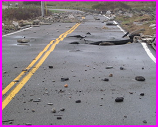 Paved roads are a godsend for travelers and truckers alike, but potholes can ruin the ride. Engineers hope to quell the scourge by devising such novel solutions as self-healing asphalt and sensor-embedded “smart” roads that can detect small cracks before they require major repairs.
Paved roads are a godsend for travelers and truckers alike, but potholes can ruin the ride. Engineers hope to quell the scourge by devising such novel solutions as self-healing asphalt and sensor-embedded “smart” roads that can detect small cracks before they require major repairs.
Read More
Filed under: Special Features | Comments Off on Self-Healing Roads
Tags: asphalt, highway construction, materials science, pavement, potholes, self-healing roads, sensors, sustainable materials, transportation engineering
Posted on December 9th, 2019 by Mary Lord
 Students in grades 6 to 11 explore the practical, scientific, ethical, and environmental issues that emerge in creating “smart” buildings that meld environmentally responsible design with cutting-edge computing technology known as the Internet of Things (IoT). Working in teams, they design and perhaps later implement smart-building solutions to make their school a better place to inhabit.
Students in grades 6 to 11 explore the practical, scientific, ethical, and environmental issues that emerge in creating “smart” buildings that meld environmentally responsible design with cutting-edge computing technology known as the Internet of Things (IoT). Working in teams, they design and perhaps later implement smart-building solutions to make their school a better place to inhabit.
Read More
Filed under: Class Activities, Grades 6-8, Grades 9-12, Lesson Plans | Comments Off on Smart School Building
Tags: careers, civil and environmental engineering, cool, electrical and computer engineering, environment, heat, IEEE, intelligent infrastructure, Internet of Things, LED, light, NGSS, sensors, smart buildings, teachengineering, TryComputing
Posted on February 23rd, 2019 by Mary Lord
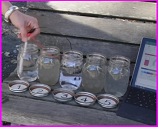 Middle school students explore how fertilizers and other solids affect water quality by building and using sensors to measure the electrical conductivity of water samples. They then create data tables and investigate possible sources of pollutants using digital visualization tools.
Middle school students explore how fertilizers and other solids affect water quality by building and using sensors to measure the electrical conductivity of water samples. They then create data tables and investigate possible sources of pollutants using digital visualization tools.
Read More
Filed under: Class Activities, Grades 6-8, Grades 9-12, K-12 Outreach Programs, Lesson Plans | Comments Off on Measuring Water Quality to Assess Human Impact
Tags: arduino, Class Activities, data analysis, electrical circuits, Electrical Engineering, Environmental Engineering, Excel, Grades 6-8, HackingSTEM Microsoft, hydrology, Lesson Plan, Pollution, sensors, water quality
Posted on April 6th, 2018 by Mary Lord
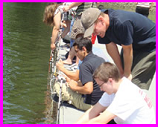 Sensors are in everything from smart phones to corn fields. They also can be a powerful and engaging tool to teach STEM. SENSE IT, a free, research-based curriculum, involves students in hands-on learning about their local environment by constructing, deploying, and interpreting data from a network of water-quality sensors.
Sensors are in everything from smart phones to corn fields. They also can be a powerful and engaging tool to teach STEM. SENSE IT, a free, research-based curriculum, involves students in hands-on learning about their local environment by constructing, deploying, and interpreting data from a network of water-quality sensors.
Read More
Filed under: Grades 6-8, Grades 9-12, K-12 Outreach Programs, Lesson Plans, Web Resources | Comments Off on Sense It!
Tags: circuits, Curriculum, data analysis, Environmental Engineering, Environmental science, Grades 6-8, Grades 9-12, integrated STEM, Internet Resources, iSTEM, Lesson Plan, Liesl Hotaling, SENSE IT, sensors, Teacher Resources, water quality, Web Resources
Posted on March 15th, 2018 by Mary Lord
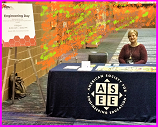 Couldn’t make it to ASEE’s Engineering Day at the 2017 National Science Teachers Association regional conferences or annual STEM Forum? Check out these hands-on highlights – and join us at the NSTA STEM Forum in Philadelphia July 11-13, 2018!
Couldn’t make it to ASEE’s Engineering Day at the 2017 National Science Teachers Association regional conferences or annual STEM Forum? Check out these hands-on highlights – and join us at the NSTA STEM Forum in Philadelphia July 11-13, 2018!
Read More
Filed under: K-12 Outreach Programs, Special Features, Web Resources | Comments Off on ASEE Engineering Day Highlights
Tags: American Society for Engineering Education K-12, ASEE, assessment design, Class Activities, Design, Energy, force and motion, Harpeth Hall School, Liesl Hotaling, NGSS, NSTA, penguins, polar ice, polar research, Resources for Teachers, sensors, STEM education, STEM NOLA, Web Resources
Posted on February 6th, 2018 by Mary Lord
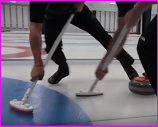 Curling, that icy version of shuffleboard, is the Henny Youngman of Olympic sports: It gets no respect. But technology has touched even this unique pursuit, in the form of an engineered “SmartBroom” that is changing how athletes train and play.
Curling, that icy version of shuffleboard, is the Henny Youngman of Olympic sports: It gets no respect. But technology has touched even this unique pursuit, in the form of an engineered “SmartBroom” that is changing how athletes train and play.
Read More
Filed under: Special Features | Comments Off on Smart Broom Sweeps Curling
Tags: 2018 winter Olympics, curling, Design, sensors, SmartBroom, Sports Engineering, sports equipment
Posted on November 15th, 2017 by Mary Lord
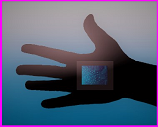 Middle and high school students follow the engineering design process to create wearable devices to monitor the health of humans, animals, or both in this competition sponsored by North Carolina State University’s Nanosystems Engineering Research Center for Advanced Self-Powered Systems of Integrated Sensors and Technologies (ASSIST). The program includes teacher training and lesson plans to help implement the design challenge. Register teams by Feb. 15, 2018.
Middle and high school students follow the engineering design process to create wearable devices to monitor the health of humans, animals, or both in this competition sponsored by North Carolina State University’s Nanosystems Engineering Research Center for Advanced Self-Powered Systems of Integrated Sensors and Technologies (ASSIST). The program includes teacher training and lesson plans to help implement the design challenge. Register teams by Feb. 15, 2018.
Read More
Filed under: Grades 6-8, Grades 9-12, K-12 Outreach Programs | Comments Off on Wearable Device Challenge
Tags: Biomedical Engineering, Competitions for Students, Contest, Electrical Engineering, Engineering Design Process, environment, Grades 6-8, Grades 9-12, Health, Lesson Plans, sensors, Teacher Training, wearable technology
Posted on July 6th, 2017 by Mary Lord
 Real-time arctic research and a new teacher-proven tool for embedding engineering into your courses are among the ASEE presentations at NSTA’s annual STEM Forum & Expo in Orlando July 12 to 14. Join us!
Real-time arctic research and a new teacher-proven tool for embedding engineering into your courses are among the ASEE presentations at NSTA’s annual STEM Forum & Expo in Orlando July 12 to 14. Join us!
Read More
Filed under: For Teachers, K-12 Education News, K-12 Outreach Programs, Special Features | Comments Off on Visit ASEE @ NSTA STEM Forum July 12-14!
Tags: American Society for Engineering Education, ASEE, Curriculum, Environmental Education, georgia tech, hands-on learning, jeff rosen, Liesl Hotaling, nancy ruzycki, NSTA, NSTA STEM Forum, professional development for teachers, Programs for Teachers, Research on Learning, sensors, STEM education, Teacher Training, university of florida
Posted on April 20th, 2017 by Mary Lord
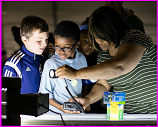 Students in grades 6-7 build light meters and investigate the nature, sources, and levels of light in their classroom. learning about the adverse effects of artificial light on humans, animals, and plants as well as the engineering concepts of sensors and lumen and lux (lx) illuminance units. They also learn how to better use light and save energy as well as some of the technologies designed by engineers to reduce light pollution and energy waste.
Students in grades 6-7 build light meters and investigate the nature, sources, and levels of light in their classroom. learning about the adverse effects of artificial light on humans, animals, and plants as well as the engineering concepts of sensors and lumen and lux (lx) illuminance units. They also learn how to better use light and save energy as well as some of the technologies designed by engineers to reduce light pollution and energy waste.
Read More
Filed under: Class Activities, Grades 6-8 | Comments Off on Measuring Light Pollution
Tags: Class Activities, Computer Science, data analysis, Electrical Engineering, Environmental Engineering, Environmental science, Grades 6-8, graphing, LEGO MINDSTROMS, Light pollution, lumens, lux, Mathematics, measuring, sensors
 Paved roads are a godsend for travelers and truckers alike, but potholes can ruin the ride. Engineers hope to quell the scourge by devising such novel solutions as self-healing asphalt and sensor-embedded “smart” roads that can detect small cracks before they require major repairs.
Paved roads are a godsend for travelers and truckers alike, but potholes can ruin the ride. Engineers hope to quell the scourge by devising such novel solutions as self-healing asphalt and sensor-embedded “smart” roads that can detect small cracks before they require major repairs.








 Students in grades 6 to 11 explore the practical, scientific, ethical, and environmental issues that emerge in creating “smart” buildings that meld environmentally responsible design with cutting-edge computing technology known as the Internet of Things (IoT). Working in teams, they design and perhaps later implement smart-building solutions to make their school a better place to inhabit.
Students in grades 6 to 11 explore the practical, scientific, ethical, and environmental issues that emerge in creating “smart” buildings that meld environmentally responsible design with cutting-edge computing technology known as the Internet of Things (IoT). Working in teams, they design and perhaps later implement smart-building solutions to make their school a better place to inhabit. Middle school students explore how fertilizers and other solids affect water quality by building and using sensors to measure the electrical conductivity of water samples. They then create data tables and investigate possible sources of pollutants using digital visualization tools.
Middle school students explore how fertilizers and other solids affect water quality by building and using sensors to measure the electrical conductivity of water samples. They then create data tables and investigate possible sources of pollutants using digital visualization tools. Sensors are in everything from smart phones to corn fields. They also can be a powerful and engaging tool to teach STEM. SENSE IT, a free, research-based curriculum, involves students in hands-on learning about their local environment by constructing, deploying, and interpreting data from a network of water-quality sensors.
Sensors are in everything from smart phones to corn fields. They also can be a powerful and engaging tool to teach STEM. SENSE IT, a free, research-based curriculum, involves students in hands-on learning about their local environment by constructing, deploying, and interpreting data from a network of water-quality sensors.  Couldn’t make it to ASEE’s Engineering Day at the 2017 National Science Teachers Association regional conferences or annual STEM Forum? Check out these hands-on highlights – and join us at the NSTA STEM Forum in Philadelphia July 11-13, 2018!
Couldn’t make it to ASEE’s Engineering Day at the 2017 National Science Teachers Association regional conferences or annual STEM Forum? Check out these hands-on highlights – and join us at the NSTA STEM Forum in Philadelphia July 11-13, 2018! Curling, that icy version of shuffleboard, is the Henny Youngman of Olympic sports: It gets no respect. But technology has touched even this unique pursuit, in the form of an engineered “SmartBroom” that is changing how athletes train and play.
Curling, that icy version of shuffleboard, is the Henny Youngman of Olympic sports: It gets no respect. But technology has touched even this unique pursuit, in the form of an engineered “SmartBroom” that is changing how athletes train and play.  Middle and high school students follow the engineering design process to create wearable devices to monitor the health of humans, animals, or both in this competition sponsored by North Carolina State University’s Nanosystems Engineering Research Center for Advanced Self-Powered Systems of Integrated Sensors and Technologies (ASSIST). The program includes teacher training and lesson plans to help implement the design challenge. Register teams by Feb. 15, 2018.
Middle and high school students follow the engineering design process to create wearable devices to monitor the health of humans, animals, or both in this competition sponsored by North Carolina State University’s Nanosystems Engineering Research Center for Advanced Self-Powered Systems of Integrated Sensors and Technologies (ASSIST). The program includes teacher training and lesson plans to help implement the design challenge. Register teams by Feb. 15, 2018. Real-time arctic research and a new teacher-proven tool for embedding engineering into your courses are among the ASEE presentations at NSTA’s annual STEM Forum & Expo in Orlando July 12 to 14. Join us!
Real-time arctic research and a new teacher-proven tool for embedding engineering into your courses are among the ASEE presentations at NSTA’s annual STEM Forum & Expo in Orlando July 12 to 14. Join us! Students in grades 6-7 build light meters and investigate the nature, sources, and levels of light in their classroom. learning about the adverse effects of artificial light on humans, animals, and plants as well as the engineering concepts of sensors and lumen and lux (lx) illuminance units. They also learn how to better use light and save energy as well as some of the technologies designed by engineers to reduce light pollution and energy waste.
Students in grades 6-7 build light meters and investigate the nature, sources, and levels of light in their classroom. learning about the adverse effects of artificial light on humans, animals, and plants as well as the engineering concepts of sensors and lumen and lux (lx) illuminance units. They also learn how to better use light and save energy as well as some of the technologies designed by engineers to reduce light pollution and energy waste.